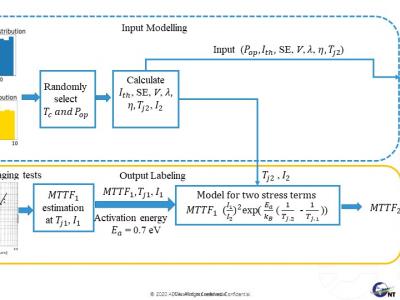Machine Learning
Nowadays road accident in Bangladesh is a buzzword due to its lack of carefulness of the driver of the vehicle where some parameter exists. The traffic safety of the roadway is an essential concern not only for transportation governing agencies but also for citizens of our country. For safe driving suggestions, the important thing is to find the variables that are tensed to relate to the fatal accidents that are occurring often. In this dataset, we provides a detailed account of the road accidents that covers the year of 2016 to 2019.
- Categories:
 Views
Views
Microarchitectural attacks have become more threatening the society than before with the increasing diversity of attacks such as Spectre and Meltdown. Vendor patches cannot keep up with the pace of the new threats, which makes the dynamic anomaly detection tools more evident than before. Unfortunately, hardware performance counters (HPCs) utilized in previous works lead to high performance overhead and detection of a few microarchitectural attacks due to the small number of counters that can be profiled concurrently.
- Categories:
 62 Views
62 Views
This dataset is created for rope crossings type classification. Crossings were divided into upper and lower types. Data were collected under four different backgrounds.
- Categories:
 16 Views
16 Views
This dataset was created for Deformable Linear Objects(DLOs) segmentation and crossings classification under complex background.
RGB images, overlap maps, gradient maps are included for segmentation task. The quantity of DLOs range from one to three.
Upper and lower type of crossings are defined for classification task.
- Categories:
 41 Views
41 Views
The dataset contains short video clips of four shoulder exercises.
- Arm flexion and extension
- Arm abduction and adduction
- Arm lateral and medial rotation
- Arm circumduction
The videos are labeled as either correct or incorrect.
- Categories:
 579 Views
579 Views
<p>This multilingual Twitter dataset spans over 2 years from October 2019 to the end of 2021, including 3 months before the outbreak of the COVID-19 pandemic.</p>
- Categories:
 333 Views
333 Views
Multi-label event classification label of each sample-document is done with nine bits. The first bit signifies whether an event is present or absent with 1 or 0 respectively. The remaining eight bits signifies presence or absence of (i) covid, (ii) flood, (iii) storm, (iv) heavy rain, (v) cloudburst, (vi) landslide, (vii) earthquake, (viii) Tsunami with 1 or 0. The location and the impact sentence classification labeling are similar.
- Categories:
 107 Views
107 ViewsA synthetic data for low power (P ≤10 mW) InGaAsP MQW-DFB lasers operating at a wavelength (λ) ranging from 1.53 to 1.57 µm at a case temperature laying between -40 ℃ to 85 ℃ with side mode suppression ratio of more than 35 dB is generated and can be used for laser lifetime prediction using machine learning based approaches.
- Categories:
 235 Views
235 Views

